Description
The birth and development of flexible FPC and rigid PCB have given birth to the new product Rigid-Flex PCB. Rigid-Flex PCB is a circuit board that combines flexible FPC and hard PCB through pressing and other processes according to relevant process requirements, forming FPC and PCB characteristics.
Rigid-Flex PCB is a combination of FPC and PCB, and the production of Rigid-Flex PCB should have both FPC and PCB Fabrication equipment. After separating the flexible FPC and rigid PCB, the FPC and PCB are seamlessly pressed together through a press machine, followed by a series of detailed steps, and finally the Rigid-Flex PCB is produced. Due to the high difficulty and numerous details of Rigid-Flex PCB, a full identity inspection must be conducted before shipment.
Rigid-Flex PCB is a new type of printed circuit board that combines the durability of a rigid PCB with the adaptability of a flexible PCB. Among all types of PCBs, the combination of soft and hard, rigid, and rigid is the strongest resistance to harsh application environments and is therefore favored by medical and automotive manufacturers.
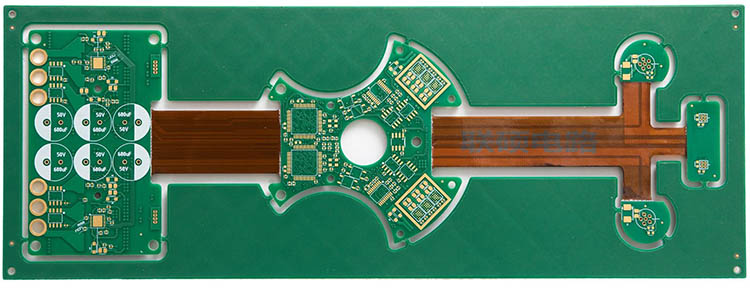
Classification of Rigid-Flex PCB
If classified according to the manufacturing process, the ways in which flexible PCBs and rigid PCBs are bonded can be divided into two categories: soft and hard, rigid composite boards, and Rigid-Flex PCBs. The difference lies in the technology of soft and hard, rigid and rigid composite boards. Flexible PCBs and rigid PCBs can be combined in the manufacturing process, where there are common blind and buried hole designs, resulting in higher-density circuit designs, while Rigid-Flex PCB technology, It is a design where flexible PCBs and rigid PCBs are made separately and then pressed into a single circuit board, with signal connections but no through holes. But currently, the commonly used term 'Rigid Flex PCB' refers to all Rigid Flex PCB products, without subdividing the two.
Physical characteristics of Rigid-Flex PCB
The Rigid-Flex PCB differs from the original flexible PCB and rigid PCB in terms of materials, equipment, and manufacturing process. In terms of materials, rigid PCBs are made of materials such as FR4, while flexible PCBs are made of materials such as PI or PET. There are issues with bonding and unequal hot compression shrinkage between the two materials, which is a difficult point for product stability. Moreover, due to the characteristics of three-dimensional space configuration, Rigid-Flex PCBs also have important considerations for stress bearing in the XY-axis direction and the Z-axis direction, in addition to stress bearing in the XY-axis direction, At present, there are material suppliers who provide improved materials suitable for Rigid-Flex PCBs for rigid or flexible PCB manufacturers, such as Epoxy or Resin, to meet the bonding issues between rigid or flexible PCBs.
In terms of equipment, due to differences in material characteristics and product specifications, the Rigid-Flex PCB must be corrected in the pressing and copper plating parts of the equipment. The applicability of the equipment will affect product yield and stability. Therefore, before entering the production of Rigid-Flex PCB, the applicability of the equipment must be considered first.
Advantages of Rigid-Flex PCB
Advantages of Rigid-Flex PCB compared to general PCB:
1. Lightweight
2. Thin interlayer
3. Short transmission path
4. Small conducting aperture
5. Low noise and high reliability
Advantages of Rigid-Flex PCB compared to rigid PCB:
1. Flexible and capable of three-dimensional wiring, changing shape according to space limitations
2. High and low-temperature resistance, flame resistance
3. Foldable without affecting signal transmission function
4. It can prevent static interference
5. Stable chemical changes, stability, and high reliability
6. It is beneficial for the design of related products, reducing assembly time and errors, and improving the service life of related products
7. Reduce the volume of application products, significantly reduce weight, increase functionality, and reduce costs
Analysis of Rigid-Flex PCB Manufacturers
The production areas of Rigid-Flex PCB worldwide are concentrated in Europe, America, and Japan, with production concentrated in a few producers. The products in North America and Europe mainly focus on military and medical products, while Japan's recent applications tend to focus on the production of DSC, DV, or mobile phones
In addition, in Asia, we mainly promote the application of Rigid-Flex PCB for mobile phones, replacing the combination design of rigid PCB, flexible PCB, and connector with Rigid-Flex PCB.
Global manufacturers of Rigid-Flex PCBs, with actual mass production products and production scales, mainly include CMK, LENSUO, VOGT Electronics, RUWEL, YHI, PARLEX, WURTH Electronics, NIPPON MEKTRON, INNOVEX, CAREER, DAEDUCK GDS, iPCB, etc., which can be roughly classified into three major fields: PCB rigid PCB factories, electronic parts factories, and flexible PCB factories.
In addition, some PCB factories have accumulated years of trial production and research and development experience, but do not have specific mass-produced products, which can be attributed to potential manufacturers. Although their output value is not visible in statistics, it may gradually have an impact on the market and may change the future Rigid-Flex PCB market ecology.
The majority of manufacturers analyzed for investment are PCB fabrication and industrial parts factories, while new entrants are also the most active among PCB manufacturers. The display shows that its product is closest to the Rigid-Flex PCB, and its original product's functions or applications are similar to the Rigid-Flex PCB, and its entry threshold and customer distribution have a certain relationship. In addition, due to the low proportion of Rigid-Flex PCB products in various factories, there is still room for development in some areas of the Rigid-Flex PCB market.
Application of Rigid-Flex PCB
1. Industrial use - Industrial use includes soft, hard, and rigid PCB used in industrial, military, and medical applications. Most industrial components require characteristics such as precision, safety, and nonvulnerability to damage. Therefore, the characteristics required for soft, hard, and rigid PCBs are high reliability, high precision, low impedance loss, complete signal transmission quality, and durability. However due to the high complexity of the manufacturing process, the output is small and the unit price is quite high.
2. Mobile phones - The application of soft, hard, and rigid PCBs in mobile phones, commonly including Hinge, Camera Module, Keypad, and RF Module for foldable phones. The advantages of using soft, hard, and rigid PCBs in mobile phones are the integration of components in the phone and the consideration of signal transmission capacity. At present, mobile phone products use a combination of soft, hard, and rigid PCBs to replace the previous two connectors and flexible PCBs. Its greatest significance in the product lies in increasing the durability and long-term reliability of mobile phone folding points. Therefore, soft, hard, and rigid PCBs are highly valued due to their high product stability. On the other hand, due to the popularity of camera phones and the integration of multimedia and IT functions within phones, the internal signal transmission volume of mobile phones has increased, resulting in a demand for modularity.
3. Consumer Electronics - In consumer products, DSC and DV are representative of the development of soft, hard, and rigid PCBs, and can be discussed in terms of performance and structure. In terms of performance, soft and hard PCBs and rigid PCBs can connect different rigid PCBs and components in a three-dimensional manner. Therefore, under the same circuit density, the total usage area of PCBs can be increased, which can relatively increase their circuit carrying capacity and reduce the signal transmission limit and assembly error rate of contacts. On the other hand, due to the lightweight and thin nature of soft, hard, and rigid PCBs, they can flex wiring, which is essentially beneficial for reducing volume and weight.
4. Automobile - The use of soft, hard, and rigid PCBs in automobiles, commonly including buttons for connecting the steering wheel to the motherboard, connecting the car's video system screen and control panel, operating the audio or function keys on the side door, reversing radar imaging system, sensors (including air quality, temperature and humidity, special gas regulation, etc.), car communication systems, satellite navigation, connecting the rear seat control panel and front-end controller board External detection system and other purposes.
Basic process flow of Rigid-Flex PCB
1. Material selection ->2. Production process flow and control of key parts ->3. Production process flow ->4. Graph transfer of inner layer single chip ->5. Multilayer positioning of flexible materials ->6. Lamination ->7. Drilling ->8. Removal of drilling and corrosion ->9. Chemical copper plating and electroplating ->10. Surface resistance welding and weldability protection layer ->11. Appearance processing

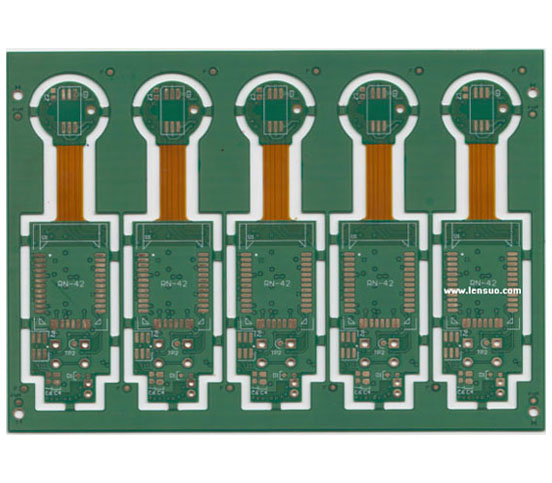

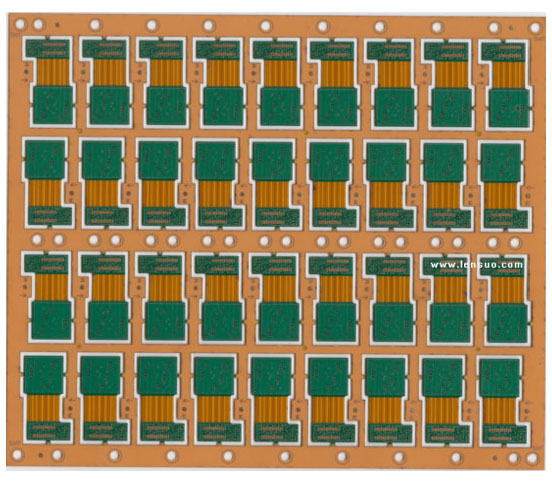
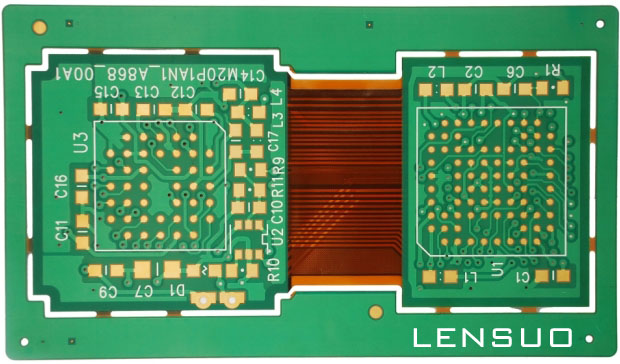
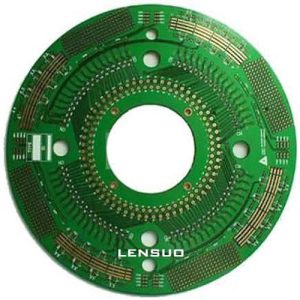
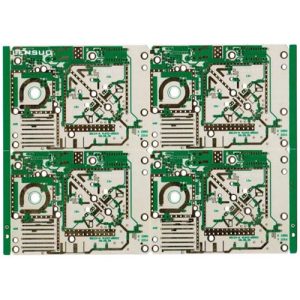

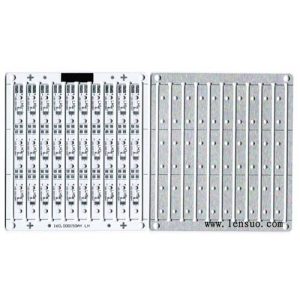
分享到: